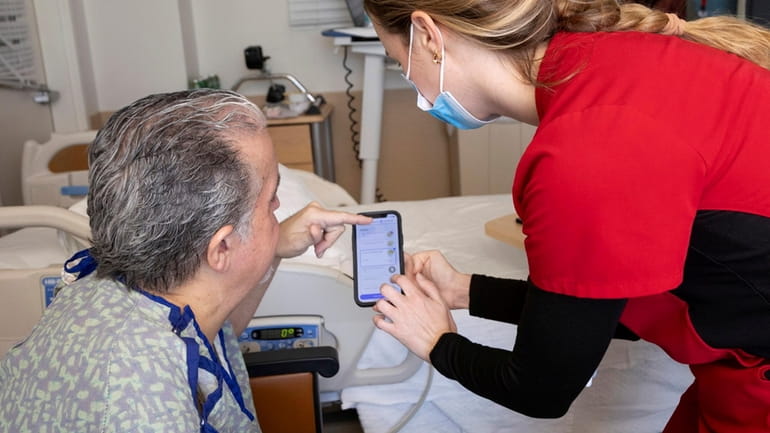Stony Brook University Hospital rolls out DoorDash-style food-ordering app for patients

Stony Brook Hospital offers a meal-ordering mobile app for patients. Credit: Stony Brook Medicine/Rob Tannenbaum
Stony Brook University Hospital is working on a new way for patients to get what the doctor ordered.
Over the past six months, the hospital has been rolling out a DoorDash-style food app, which curates options for each patient from the hospital kitchen's menu and streamlines meal delivery.
Staff members customized an app offered by the Cbord technology firm by devising a more user-friendly display and uploading photographs of the dishes they offer. They introduced the tool in one unit at a time, and it's now available for free to patients and their relatives across most of the hospital.
“[It] does give them a sense of control in a very chaotic health care environment,” said Nicole Rossol, chief patient experience officer at the hospital. “That’s something that we’ve heard from patients has been very meaningful.”
The app is also accessible to family outside of the hospital, so a mom could remotely order her child's favorite food or a dish she knows will cheer up her aging parent, Rossol said.
Volunteers have been trained on how to help less tech savvy patients acclimate to the app. So-called ambassadors walk around the hospital with iPads, which they can use to take orders on behalf of patients. More traditional food request methods are still available.
"If it becomes a frustrating point, we don't want to add any more stress or anxiety to their hospitalization, so we certainly will assist," Rossol said, noting that the hospital initially gives people an opportunity to learn how to use the app. "What we've found is that a lot of people are using technology like this in their day-to-day life to make doctors' appointments and Amazon purchases and all kinds of things."
The tool is programmed to show what's appropriate for a given patient. For instance, only clear liquids may be displayed following a surgery, but options will later expand in accordance with clinician guidance. The app factors in food allergies and has filters for more than 30 diets, including halal, kosher and gluten-restricted eaters. The tool has a way to track carbohydrates and prevent users from ordering more than they should consume.
Staff have seen benefits. Nurses report that they make fewer time-consuming calls to the kitchen and appreciate the efficiency, Rossol said.
“They're able to then focus on spending more time with the patient and following up with their other nursing responsibilities,” she said.
The culinary team doesn't have to deal with as many misplaced paper orders or struggle to decipher messy handwriting. Since patients have a better shot at getting what they want, more meals appear to be eaten and less food is wasted, said Kathleen Logsdon Carrozza, assistant director of food and retail services at the hospital.
“When you have a patient that doesn't know exactly what they want, you send what you think will be logical, and they may or may not eat one or two things off the tray,” Logsdon said. “If they or someone they love has picked exactly what they like, they're much more likely to consume more of it.”
The hospital declined to estimate how much it cost to roll out the app.
Stony Brook Medicine believes it's one of the first health systems in the region to roll out a food-ordering app. This type of technology isn't “prominent” yet in hospitals, said Denise Wiseman, who previously worked as a hospital food service director and now runs a patient experience consulting firm called The PX Community.
“This is the first time that I'm hearing about the extension of an app to patients,” said Wiseman, who lives in Washington state. “It's a great option.”

